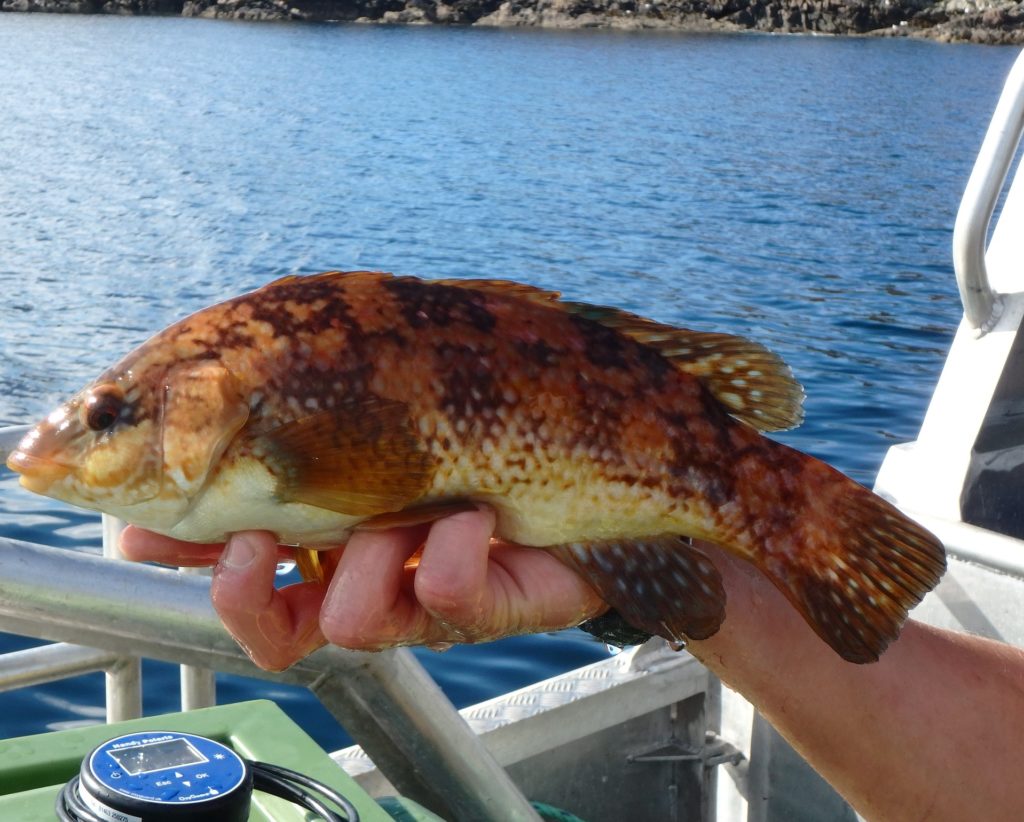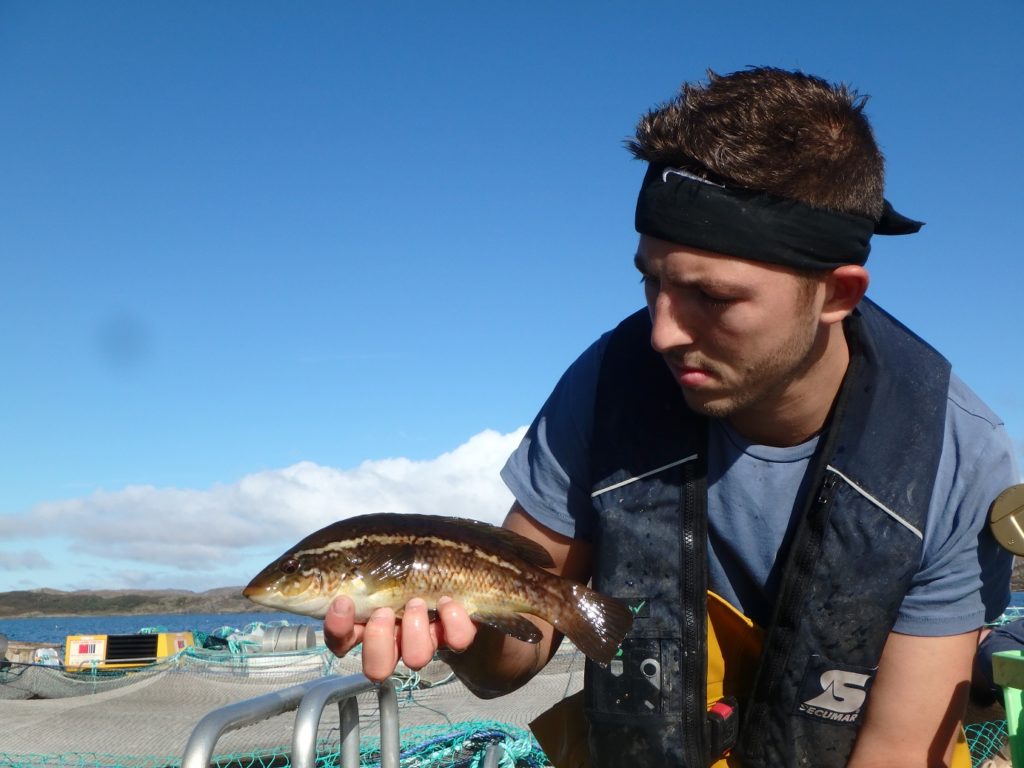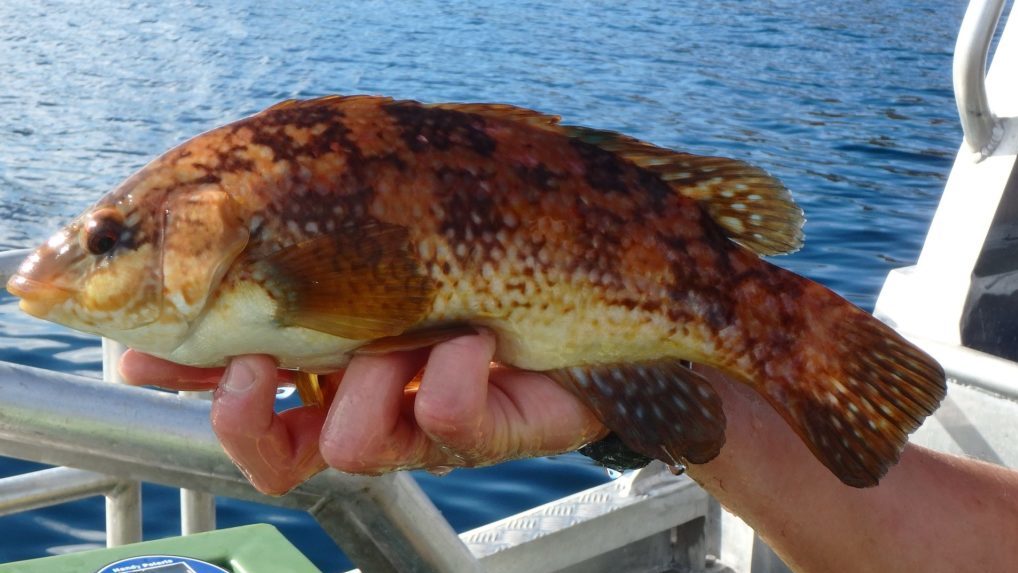Cleanerfish contribute to Loch Duart’s sustainably farmed, high quality salmon
Consumers want salmon that is of high quality in health and taste. The best environment for rearing these wonderful fish is the sea – but a good, healthy Scottish coast-line is a rich, diverse ‘soup’ of flora and fauna and you never know what is coming in with the tide! The benefit of farming in this environment is that it is natural to growing salmon, but equally you need clever ways to control biological challenges such as sea lice which that same environment presents. At Loch Duart we want these controls to be non-medicinal.
Fish farming is very much like land farming. The main threats to livestock are disease, parasites (such as sea lice) and predators. These problems are very visible on land – underwater they are less so, but just as real. Sea lice, which are transferred to farmed fish from the surrounding environment, are a threat to the health of farmed salmon.
Media attention on sea lice comes from the drop in numbers of wild salmon across Europe. Scientists search for reasons for this decline and cite sea lice as a possible cause alongside climate change, competition for marine feed in traditional Atlantic salmon feeding grounds and moving sea currents.
When Loch Duart’s young salmon go to sea they come from freshwater and, as sea lice cannot live in freshwater, the fish are sea lice free. Over the next months, as the salmon mature at sea, there is the ever-present risk of sea lice infection from the water around them. This is something our experienced husbandry & health staff monitor for very closely, and we make use of preventative non-invasive measures such as protective ‘skirts’ around our pens to minimise the risk. Once sea lice are present in a pen of salmon, this can require medicinal intervention, although we are developing many other ways of combating the problem. Our clear aim is to have a range of entirely non-medicinal solutions within the next couple of years and with our small pens and knowledgeable staff, we are on target to achieve that.
Right now, in October 2017, sea lice counts (counting is based on the number of adult gravid female sea lice per fish) on all Loch Duart’s sites are well below Code of Good Practice treatment trigger levels and sea lice counts are zero on all of Loch Duart’s mainland sites. Cleanerfish have much to contribute to the success in lice levels, and control of sea lice has been carefully monitored and managed by our health and husbandry teams to ensure sustainable control is achieved. Read about cleaner fish here: https://lochduart.com/cleaner-fish-what-do-they-do/
Lumpfish and Wrasse are cleanerfish that are native to Scottish waters, and this is one of the non-medicinal controls of sea lice on Loch Duart’s farms. Loch Duart is working closely with relevant authorities and conservation groups to support the development of regulation to protect the cleanerfish species around the coast and we will continue to use sustainable, environmentally responsible farming methods.
Although Loch Duart has faced issues with sea lice in the past, we use no antibiotics nor harmful chemicals on our salmon and place a strong emphasis on the welfare of the fish we proudly raise. Our salmon’s diet at Loch Duart is as close to the natural diet of a wild salmon as possible without putting extra pressure on the sea’s resources. Loch Duart also practises low-density rearing and fallowing which allows the fish to thrive in this type of environment.
At Loch Duart, we’re committed to rearing healthy salmon in a sustainable and environmentally friendly way, ensuring
that our customers across the world receive the best tasting fish that it is possible for us to produce.



